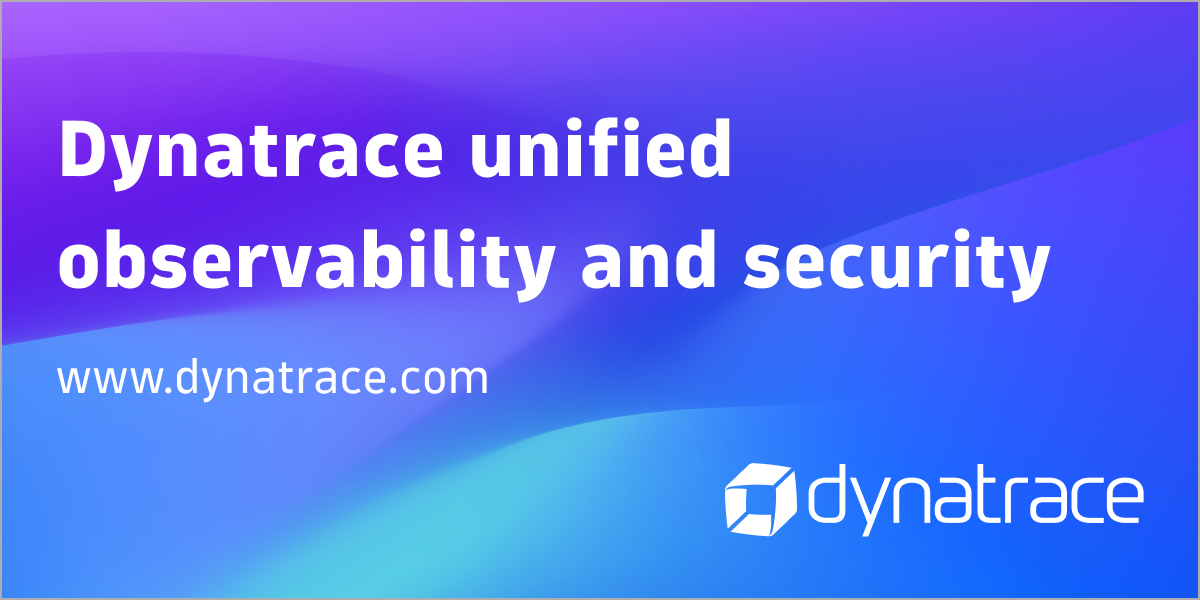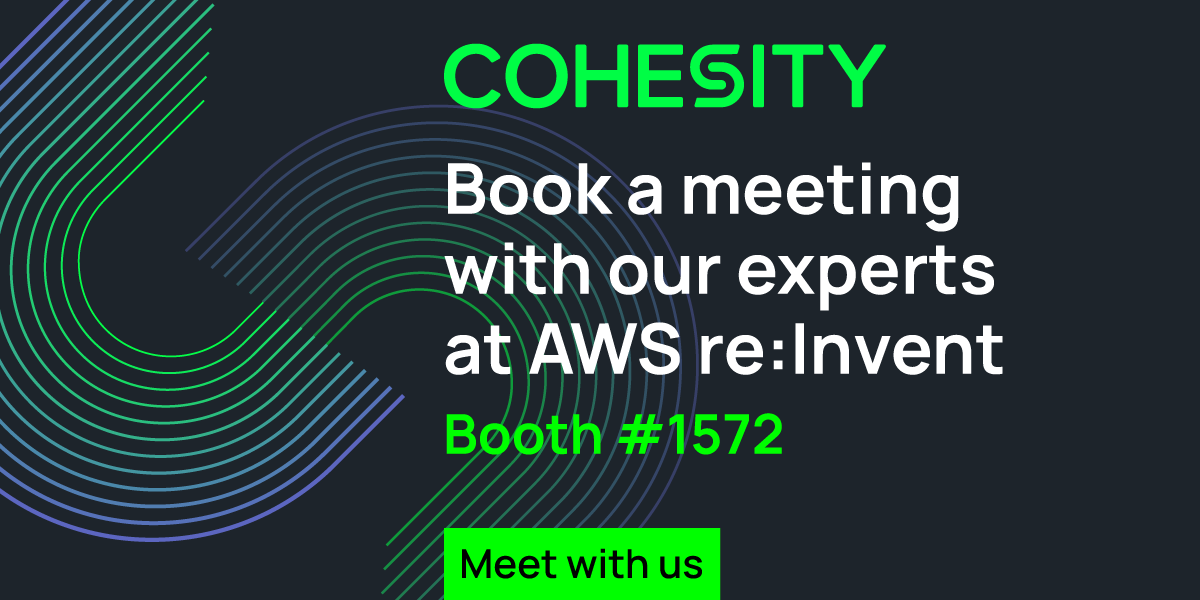VMblog: If you were giving an AWS re:Invent attendee a quick overview of the company, what would you say? How would you describe the company?
Colin Neagle: At our core, Quali is an infrastructure automation company. But over the years, our platform has evolved to support how hybrid cloud infrastructure is used. We describe this shift in approach as offering a control plane to help our customers move faster in the cloud without sacrificing efficiency or security. In practice this means simplifying infrastructure so more stakeholders can use it, using automation to optimize how they use it, and providing visibility to help leadership understand how it's being used.
VMblog: Your company is sponsoring this year's AWS re:Invent event. Can you talk about what that sponsorship looks like?
Neagle: We've been an AWS partner for years and have sponsored AWS customer-facing events regularly. There are few better opportunities to get feedback on our product strategy than to speak with the AWS community face-to-face and learn about what's important to them. We're heading to Vegas with several members of our technical staff and ecosystem partnership development, and we're excited to hear about what the community is interested in.
VMblog: How can attendees of the event find you? What do you have planned at your booth this year? What type of things will attendees be able to do at your booth?
Neagle: We're very fortunate this year to have a booth in the Infrastructure Solutions zone. Our actual booth number is 512, and you can find the Infrastructure Solutions zone just to the left after entering the expo hall. Of course, we'll have some giveaways and raffles at the booth, and our team will be demonstrating our SaaS platform, Torque, at the booth.
VMblog: Have you sponsored AWS re:Invent in the past? If so, what is it about this show that keeps you coming back as a sponsor?
Neagle: We have. Aside from it being one of the largest annual cloud-focused events in the country, re:Invent brings together the people who can give us the most valuable feedback on our products. It's also a great opportunity to keep up with the latest updates from AWS and get the perspective from the AWS community.
VMblog: What do you attribute to the success and growth of this industry?
Neagle: It's an interesting time to consider that question because I think a lot of people are starting to wonder whether their foray into the public cloud has been successful. Of course, the cloud industry has been revolutionary, making enterprise-grade technology accessible to anyone with a computer and a credit card. Thinking about things like machine learning and artificial intelligence-they've lowered the barrier for those types of technologies, and that impact is hard to quantify.
But it's not hard to find surveys and interviews where enterprise technology and engineering leaders are starting to question their investment in public cloud. Revenue is down, budgets are tight, and almost everyone is feeling pressure to show immediate ROI on every dollar spent.
And what we often remind our customers is that the ROI is in how you use the cloud. If you don't use it responsibly, you'll blow out your budget. If you tighten up your processes to focus on cost efficiency, you'll bring things grinding to a halt and diminish the velocity that makes the cloud so valuable in the first place.
So to answer your question, it's the velocity that has made the public cloud so successful. And as enterprises find ways to take advantage of that velocity while maintaining efficiency, there's no reason the industry should slow down.
VMblog: What kind of message will an attendee hear from you this year? What will they take back to help sell their management team and decision makers?
Neagle: I would say that it's time to take a developer- or end user-centric approach to the cloud. So many of the cloud management platforms that helped drive the growth of public cloud in the past decade-plus have not evolved in tandem with the way that developers and engineers use the cloud today. It's not enough anymore to know which cloud services are powering your application or what showed up on the cloud bill, because that information doesn't provide the context you need to make decisions that drive ROI in the cloud. Today you need to accommodate the open-source ecosystem that your teams rely on to provision and access cloud infrastructure. And that extends to visibility and governance. If your teams are using a suite of tools to move faster in the cloud, what are you doing to make sure you can see what they're running? How do you support developer experience without incurring security risks or seeing a spike in cloud spend? There are ways to move faster in the cloud without incurring the budgetary or security risks of unmanaged usage. And it starts with a focus on the engineers and developers who use the cloud.
VMblog: Can you double click on your company's technologies? And talk about the types of problems you solve for an AWS re:Invent attendee.
Neagle: We're a lightweight SaaS platform that bridges the gap between where cloud infrastructure is defined and where it is consumed. Typically, when someone-for example a developer or a software tester-needs to run a cloud environment, they have to request someone with expertise in cloud infrastructure to provision it for them. Which pulls them away from their work and naturally leads to delays.
At the same time, that provisioning process leaves room for misconfigurations and idle cloud resources that drive up budget and create security risks. So, in a lot of cases, you have a situation where cloud operations are slow but still aren't standardized in a way to maintain efficiency and security.
Our platform leverages our users' existing cloud resources configurations and makes them digestible and repeatable for the stakeholders who need to run them. So, a tester can deploy a pre-configured testing environment every time they need it, directly within the CI/CD or other tool they rely on. And they don't need to learn how to use Terraform or CloudFormation or whatever tool was used to define those cloud services.
And since our platform orchestrates and launches those cloud services, you can track who's running which resources, track costs based on the team who launched them, and enforce rules to deny deployments with misconfigurations or overly expensive resources.
VMblog: While thinking about your company's solutions, can you give readers a few examples of how your offerings are unique? What are your differentiators? What sets you apart from the competition?
Neagle: The way we help manage cloud costs is definitely unique. Most cloud cost management tools rely on cloud billing data and focus on things like discount pricing opportunities. Since our platform defines and deploys cloud resources, we can calculate costs based on that activity. So, we're not only moving the focal point to the resource deployment and runtime, but also to the person who deployed it and the purpose it supported. It's a big shift for an industry that has been infrastructure-centric for so long.
That also allows us to automate recommendations, such as idle cloud resources. Our platform looks for signals that indicate a cloud resource is inactive, then calculates the potential cost savings from terminating it and provides immediate access to the resource configuration and owner who deployed it.
Our approach to cloud governance is truly automated. I've seen platforms that trigger notifications about policy violations, which can result in a mountain of notifications but little resistance to some truly risky behavior unless someone intervenes manually. Again, since we deploy the infrastructure, our platform can simply deny the deployment and/or require approval from an admin if someone attempts to launch a cloud resource that violates a governance policy. So, your teams can run the infrastructure they need, but only as long as it's compliant.
And we're a truly API-first platform when it comes to the tools our users rely on to provision and run infrastructure. We plug into CI/CD, CLI, IDE, and we've helped platform engineering teams to incorporate application infrastructure into Internal Developer Platforms, like Spotify Backstage. I always say that some of the users who benefit most from our platform rarely interact with it, because we help them use their preferred toolset more efficiently.
VMblog: AWS re:Invent is typically a great venue for a company to launch a new product or an update to an existing product. Will your company be announcing anything new? If so, without asking you to give away too much, can you give us a sneak preview?
Neagle: We've enhanced our support for AWS CloudFormation. Our Torque platform will automatically discover CloudFormation templates in a Git repository and leverage the cloud resource configurations to create, deploy, and govern application environments automatically.
We are also releasing no-code environment orchestration capability. Essentially, admins can connect a Git repository and turn IaC resource configurations into "building blocks" that they can drag-and-drop to define the inputs and dependencies for an environment. While our platform will continue to support YAML for all resources, this just makes it easier to define new environment blueprints.
And finally, our automated inactivity detection has already shown some impressive results for our customers. Using our machine-learning engine, our Torque platform will recognize when an actively running cloud resource is inactive-or not being used for an active workload-and calculate the cost savings of terminating it. Our new Opportunity Savings dashboard will aggregate these recommendations so admins can prioritize based on impact and dive into the culprits behind this waste.
VMblog: Are companies going all in for the cloud? Or do you see a return back to on-premises? Are there roadblocks in place keeping companies from going all cloud?
Neagle: There are certain factors that prevent those in some industries from going all in on the cloud. Financial services, for example, will need to keep some of their infrastructure on-prem for regulatory and security reasons. Others have legacy systems on-prem that they won't be too quick to abandon for various reasons.
But I would expect most companies to continue embracing the cloud. I think we hear more about the few that decide to revert to on-premises than we do about those that continue to migrate or build out new functions in the cloud. We still see plenty of organizations moving new workloads to the cloud. And especially as cloud-native technologies continue to proliferate, the value will be just too great to pass up.
We live in a hybrid cloud world, and that's not likely to change any time soon. This is why we recommend a developer-centric approach to infrastructure. Those that normalize infrastructure across platforms will cut through the complexity that holds back cloud ROI.
VMblog: The keynote stage will be covering a number of big topics, but what big changes or trends does your company see taking shape as we head into 2024?
Neagle: There's a couple of things that we think will shape the cloud landscape in the coming year.
First, we'll see the pace of change accelerate due to the proliferation of new AI technologies, and it will bleed into the majority of cloud-adjacent offerings in the market.
Second, cloud infrastructure governance considerations like security, compliance and cost controls will need to shift left. No longer will these managed retroactively solely through monitoring; they will need to be embedded into the infrastructure, itself, before environments are even provisioned. This will allow businesses to proactively address these issues for greater control and predictability.












